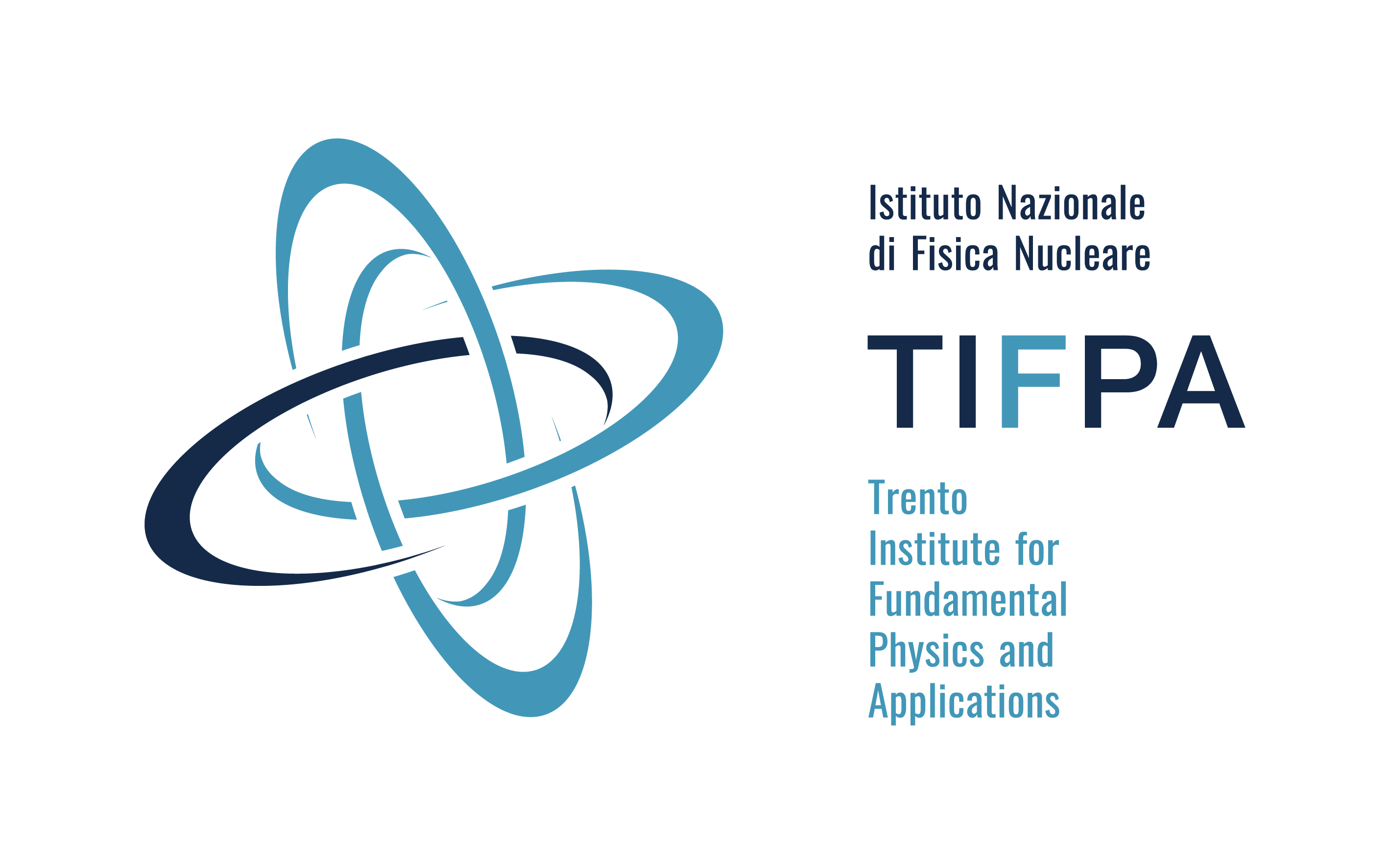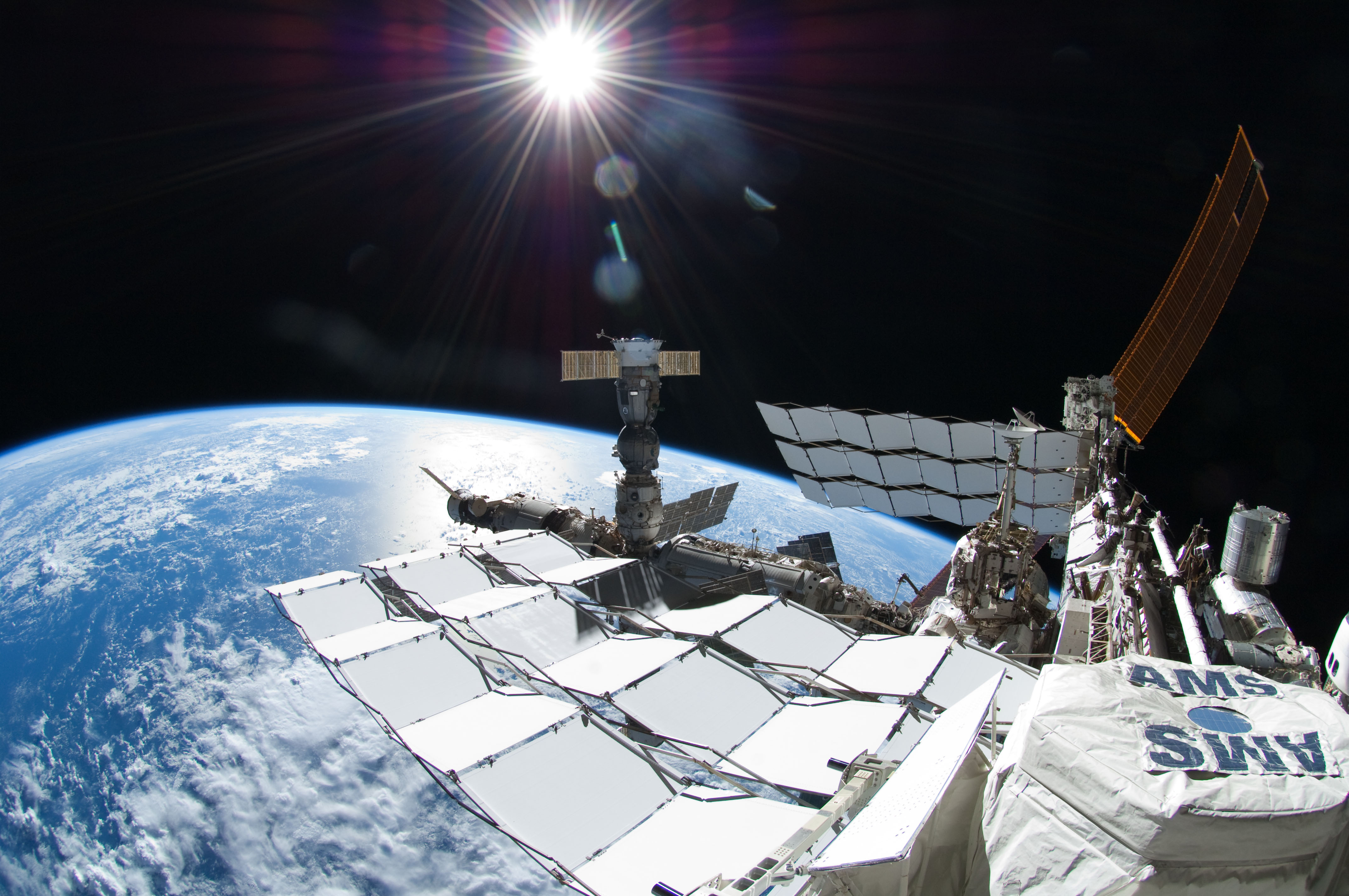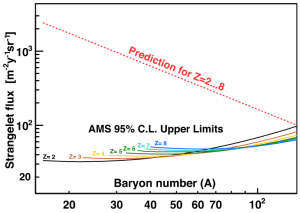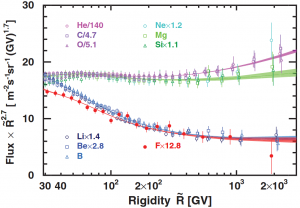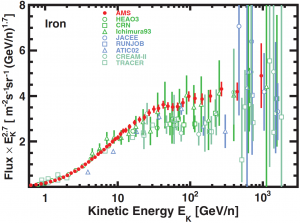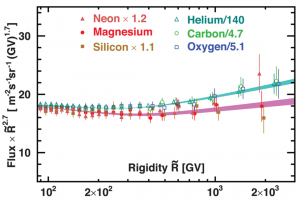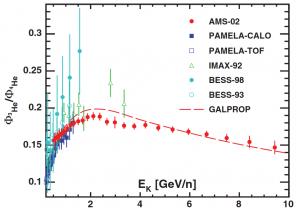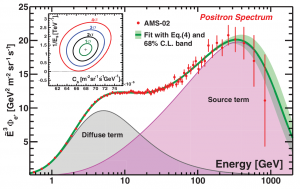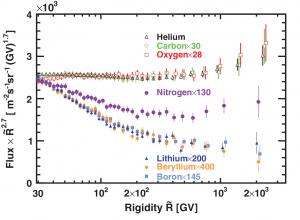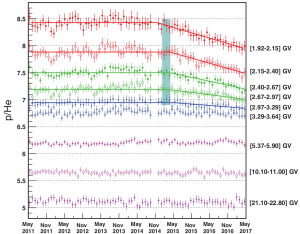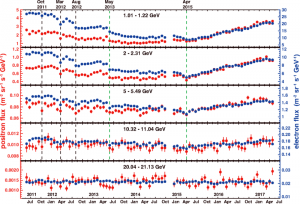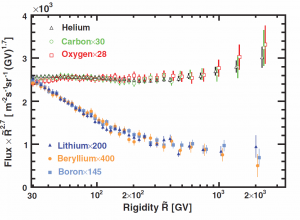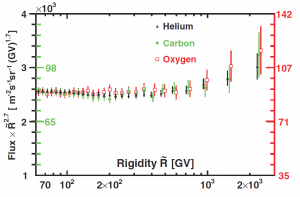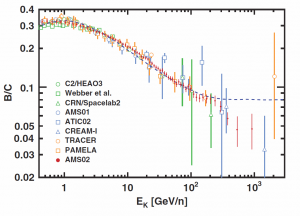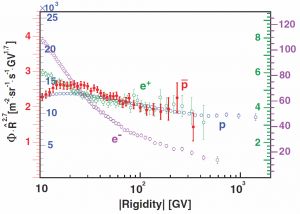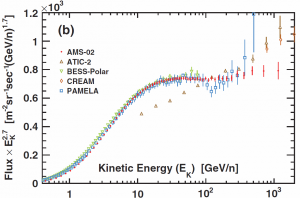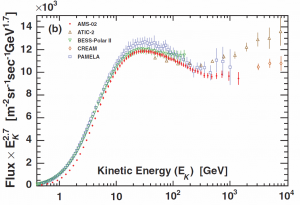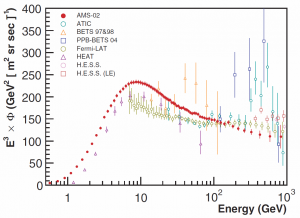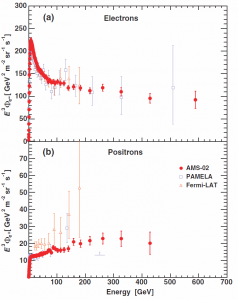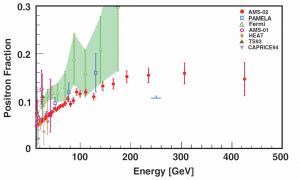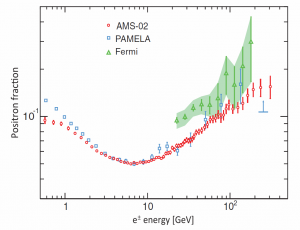AMS-02 - Alpha Magnetic Spectrometer
The Alpha Magnetic Spectrometer (AMS-02) is a state-of-the-art particle physics detector designed to operate as an external module on the International Space Station (ISS).
It uses the unique environment of space to study the Universe and its origin by searching for signals of new Physics while performing precision measurements of cosmic rays composition and flux.
The AMS-02 observations will help answer fundamental questions, such as "What makes up the Universe's invisible mass?" or "What happened to the primordial antimatter?"
The Science
Cosmos is the ultimate laboratory, where cosmic rays can be observed at energies higher than any accelerator.
AMS-02, the largest magnetic spectrometer ever launched in orbit, uses the unique environment of space to advance the knowledge of the Universe and to contribute to the understanding of its structure and origin by searching for the missing antimatter, by exploring the origin of dark matter and by measuring with the highest accuracy the composition of cosmic rays in the multi TeV region of energy.
In addition, it will search for strangelets, a possible new form of matter made out the so-called strange quarks.
• Antimatter
Experimental evidence indicates that our galaxy is made of matter; however, there are more than a trillion galaxies in the Universe and the Big Bang theory assumes that equal amounts of matter and antimatter were present at the origin of the Universe.
Theories which try to explain the present matter antimatter asymmetry are still not confirmed by the existing measurements.
Whether or not primordial antimatter exists in the Universe is a fundamental question in modern astroparticle physics and cosmology.
The observations of just one complex antinucleus would provide evidence for the existence of antistar nucleosynthesis and a large amount of antimatter somewhere in the Universe.
• Dark Matter
The visible matter in the Universe (i.e. stars, hydrogen clouds, etc.), it is not enough to account for the observed gravitational effects. Another component of invisible matter must be responsible for generating the gravitational pull that shapes the Universe, such component is called Dark Matter.
The most recent measurements from the Plank experiment confirm that Dark Matter is not baryonic, i.e. it is something different from what we encountered so far, and it accounts for 84% of the matter content of the Universe.
Even more interesting, Dark Matter and ordinary matter combined account for only the 31% of the Universe energy density, the remaining 69% is from different component called Dark Energy.
The exact nature of both dark components is still unknown.
One of the leading candidates for dark matter is a weakly interacting neutral particle (WIMP). If WIMPs exist, they could collide with each other (annihilation) or very slowly decay. These processes could produce excesses of charged or neutral ordinary particles which can be detected by AMS-02.
Anomalous peaks or structures in the energy spectra of positron, anti-proton, anti-deuterium or gamma ray could signal the existence of WIMPs and reveal some of their features.
• Strangelets
Six types of quark (up, down, strange, charm, bottom and top) have been found experimentally, however all matter on Earth is made of only two types, up and down. It is a fundamental question whether there is stable matter made of three types of quark (up, down and strange).
Predicted theoretically, such matter is known as strangelets. Strangelets can have extremely large mass and very small charge-to-mass and their existence can be probed by AMS.
• Cosmic ray composition and fluxes
AMS-02 will be operative for the whole lifetime of the ISS, gathering a huge amount of data and determining long term variations of the cosmic rays fluxes and composition, from protons to iron, and over a wide energy range. These data will improve our understanding of the interstellar propagation and of the mechanisms at the origins of cosmic rays. In addition, accurately understanding cosmic radiation is required for manned interplanetary flight: for example, Galactic Cosmic Rays (GCR) represent a significant obstacle to a manned space flight to Mars, and accurate measurements of the flux and composition of primary cosmic rays are needed to plan appropriate countermeasures.
TEAM
• Involved external institutions: 56 institutions from 16 countries (see list)
• INFN groups: Bologna, Milano, Perugia, Pisa, Roma 1, TIFPA
• Principal Investigator: Samuel TING, MIT Boston, USA and CERN Geneva, Switzerland
• INFN Project: CSN II
TIFPA Team
• Local responsible for TIFPA:
 | Francesco Nozzoli |
• Involved TIFPA people:
 | Roberto Battiston | |
 | William Burger | |
 | Francesco Dimiccoli | |
 | Dass Abhinandan | |
 | Ignazio Lazzizzera | |
 | Paolo Zuccon |
External resources
AMS-02 official website
AMS-02@CERN
• Latest AMS-02 results:
click on the graph icon to see an enlarged figure
AMS-02 published data are available on the ASI-SSDC Cosmic Ray Database
Images

Exterior view of the International Space Station (ISS) taken during a session of Extravehicular Activity (EVA) with a fisheye camera. The shuttle Atlantis is partially visible docked to the Node 2/Unity and the Alpha Magnetic Spectrometer is visible in the foreground.
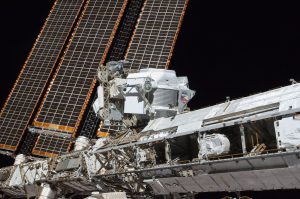
The starboard truss of the ISS is featured in this image photographed by an STS-134 crew member while space shuttle Endeavour remains docked with the station. The Alpha Magnetic Spectrometer is visible in the center.
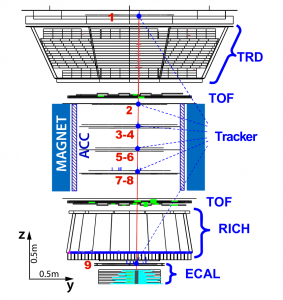
The AMS detector with an example of a measured 868 GeV positron event. Tracker planes 1-9 measure the particle charge, sign and momentum. The TRD identifies the particle as an electron/positron. The TOF measures the charge and ensures that the particle is downward-going. The RICH measures the charge and velocity. The ECAL independently identifies the particle as an electron/positron and measures its energy.
